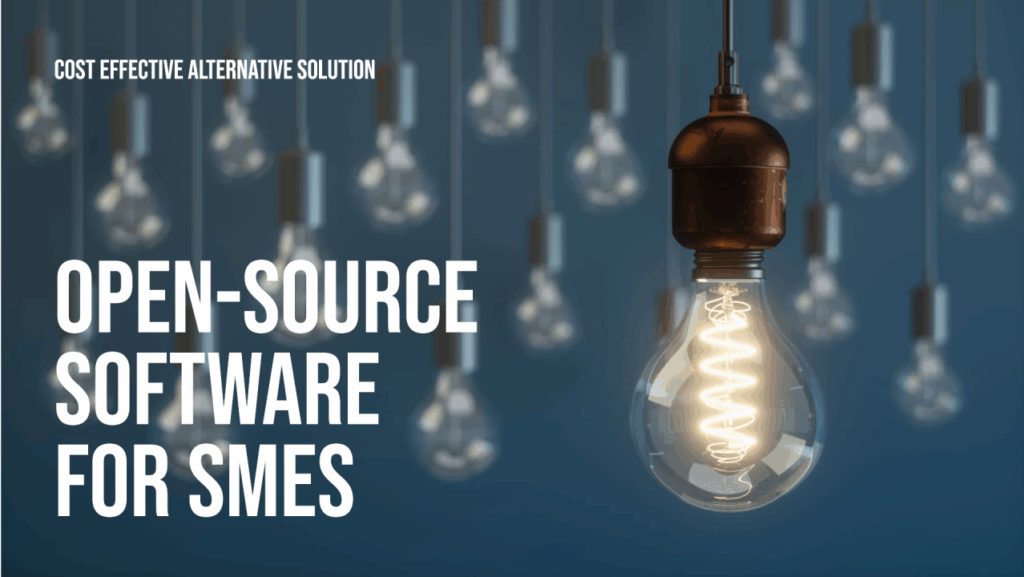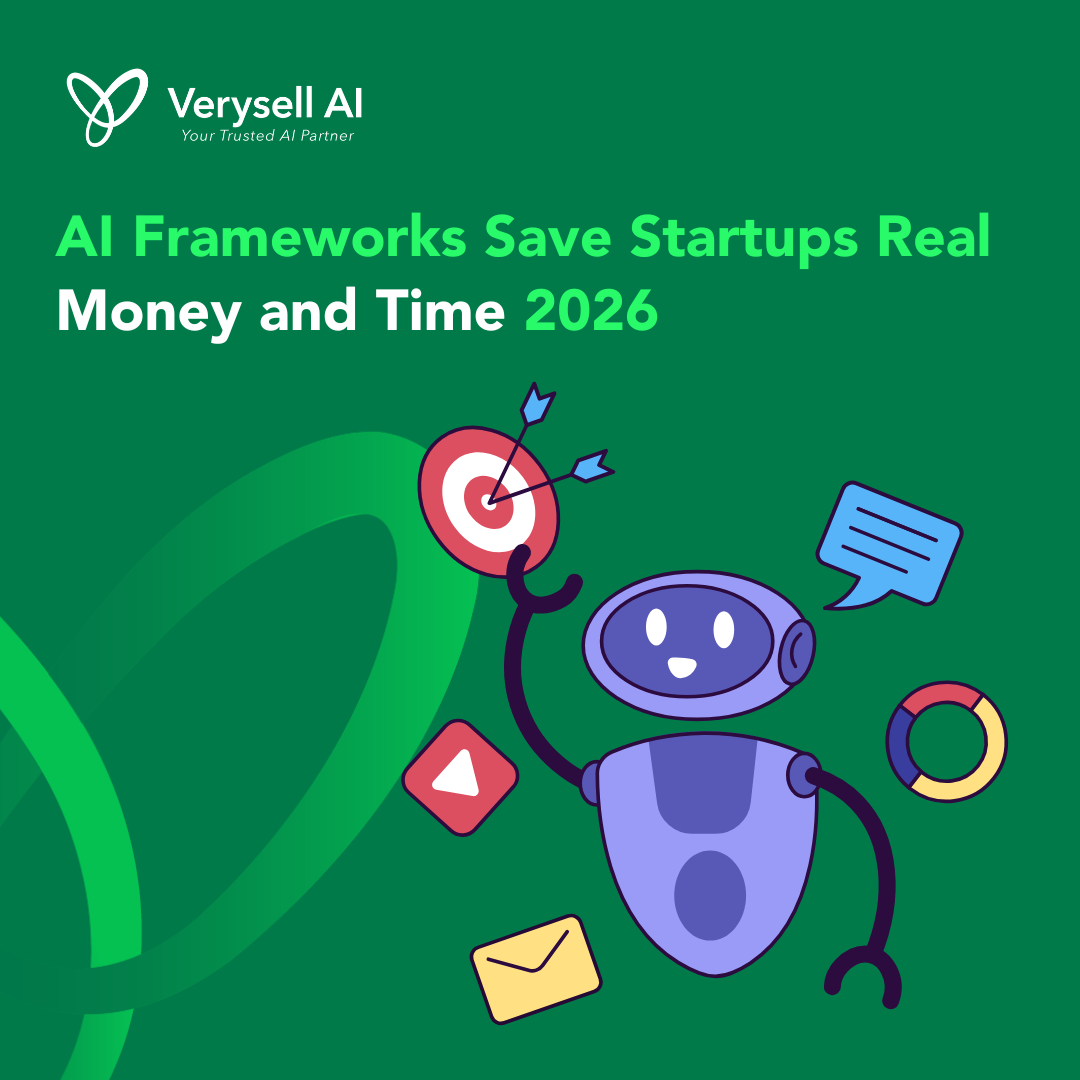Open-source AI frameworks consistently lower development expenses by 60 to 80 percent, offering capabilities on par with enterprise tools. Yet many early-stage companies still struggle to choose the right framework when financial pressure is high and build timelines are tight. If you’re comparing costly proprietary platforms with freely available alternatives, the question becomes simple: which frameworks actually help you build faster without exhausting your budget? A poor decision here can lead to months of rework and wasted resources.

This guide highlights the most cost-effective AI frameworks for startups operating on limited budgets. It includes real cost estimates, execution timelines, and practical insights from teams that have successfully shipped AI products under strict constraints. As more organizations adopt cloud infrastructure, you’ll also see how to use that shift to maximize efficiency and minimize overhead.
>> Click here to explore our AI services!
1. Open-source Services Market Growth
The global market for open-source services was estimated by Allied Market Research to be worth $33.9 billion in 2023. The Business Research Company estimates that by the end of 2025, the global market for open-source services would have grown from $42.73 billion in 2024 to $51.64 billion. At this pace, it is expected to increase at a CAGR of 16.8% and reach $165.4 billion by 2034. This increase is a reflection of businesses’ increasing reliance on open-source consultants to handle adoption, integration, and optimization issues.To reduce the cost of enterprise software while preserving dependability and performance, businesses are increasingly looking for open-source support.

2. The Smartest Choices for Fast, Affordable AI Development
Startups working under time and budget pressure should focus on TensorFlow Lite, Hugging Face Transformers, and FastAPI. These tools significantly shorten development cycles while cutting costs compared with custom model development. Key points are open-source tools eliminate licensing fees, pre-trained models drastically reduce development time, cloud-based deployment keeps infrastructure spending low, and API-driven architecture enables teams to work in parallel.
Startups also benefit from the strong community ecosystems surrounding these frameworks. TensorFlow Lite and Hugging Face offer extensive documentation, ready-made examples, and active developer forums that help teams quickly troubleshoot issues without needing expensive external consultants. This shared knowledge pool enables even small engineering teams to build, optimize, and deploy models efficiently, reducing both technical risk and project uncertainty. FastAPI further supports this momentum by providing a lightweight, high-performance backend architecture that scales easily as user demand grows.
Beyond cost and speed, these frameworks help startups maintain long-term product agility. Open-source tools make it easier to swap models, update pipelines, or integrate new features without being locked into proprietary ecosystems. As customer needs evolve, startups can rapidly adapt their AI systems—whether by fine-tuning new models on Hugging Face, converting models to TensorFlow Lite for edge deployment, or extending FastAPI endpoints to support additional services. This flexibility ensures that technical decisions made early on do not constrain innovation later, which is critical for surviving and growing in highly competitive markets.
2. What Really Matters When Picking a Framework
The cost savings of open-source solutions are straightforward: no licensing fees and fewer long-term financial obligations. But beyond immediate savings, you gain the flexibility to pivot quickly without depending on expensive vendors. Using frameworks with rich model libraries and pre-built components allows your team to skip lengthy model-building processes. Fine-tuning existing models in days, not months, becomes crucial when your startup must validate market fit before funding runs out.

When evaluating AI frameworks, it is essential to consider how quickly a team can adopt new tools, with Python-based ecosystems generally offering the lowest learning curve due to their simplicity and widespread use. Deployment requirements also play a critical role, as cloud-native solutions help teams minimize operational overhead and streamline scalability. A strong community ecosystem provides faster troubleshooting, richer documentation, and more reliable support, all of which shorten development cycles. Finally, long-term sustainability depends on choosing AI frameworks with broad industry adoption, reducing the risk of technical debt and ensuring continued compatibility, updates, and talent availability. In today’s environment, where only a small portion of IT budgets goes toward innovation, frameworks with minimal operational overhead are essential.
3. High-Value AI Frameworks for Startups
TensorFlow Lite is ideal for organizations prioritizing mobile performance. It shrinks model size by up to 75 percent and runs smoothly on devices with limited memory, boosting app responsiveness and retention (Adi and Casson, 2021). With its collection of pre-trained models for vision, language, and classification, teams can activate essential AI functions in a fraction of the usual time. This solution offers a significantly reduced model footprint while maintaining strong performance on low-resource devices, supported by a wide selection of pre-built models and reinforced by Google’s long-term commitment to ongoing development.
Besdies, Hugging Face sets the standard for modern NLP, offering more than 100,000 pre-trained models. Startups can deploy advanced language capabilities quickly, bypassing the costly process of training large models. It works seamlessly with both PyTorch and TensorFlow, preserving flexibility within existing engineering stacks.
Why startups rely on it:
- Extensive library of pre-trained models
- Compatible with multiple machine learning frameworks
- Robust community support
- Easy fine-tuning for specialized use cases
4. FastAPI: Rapid, Production-Ready AI API Development
FastAPI allows engineering teams to deliver secure, high-performance AI APIs significantly faster than traditional web frameworks, largely thanks to its asynchronous architecture, automatic documentation generation, and lightweight design. These capabilities reduce engineering effort while enabling the platform to support high-concurrency workloads common in AI inference pipelines. Its maturity in real-world environments, such as NLP Cloud’s deployment of multiple transformer models in production, illustrates how effectively FastAPI can serve deep learning applications at scale with minimal operational friction.

From a cost-efficiency perspective, leveraging pre-trained models remains the most practical strategy, often cutting development budgets by 70 to 90 percent. Fine-tuning these models typically requires only modest compute resources and small datasets, allowing even small teams to build enterprise-grade AI capabilities affordably. Standard expenses tend to follow a predictable pattern: base models are usually free, fine-tuning costs range from $100 to $500, initial hosting can run between $10 and $50 per month, while fully custom model development may reach $10,000 to $50,000 or more. Would like to explore AI Frameworks that support your business? Contact Verysell AI to talk to our expert team!


